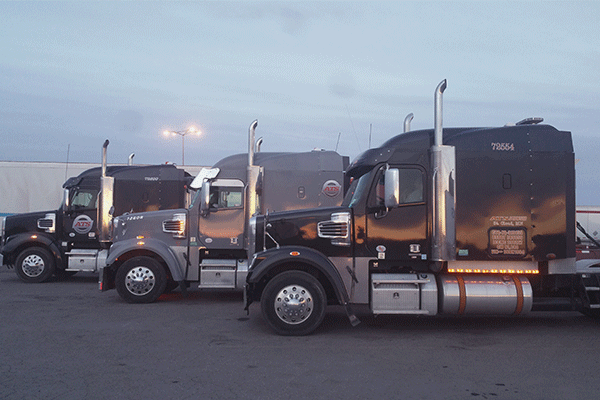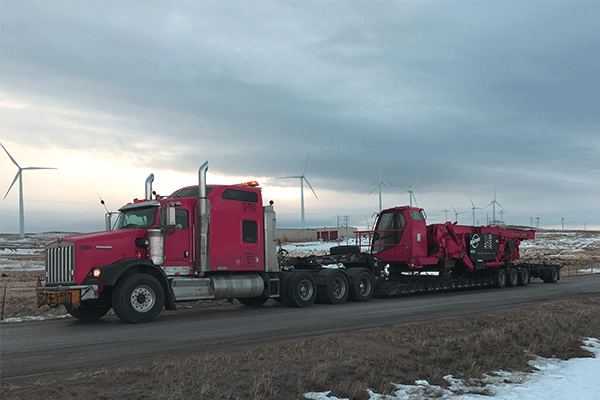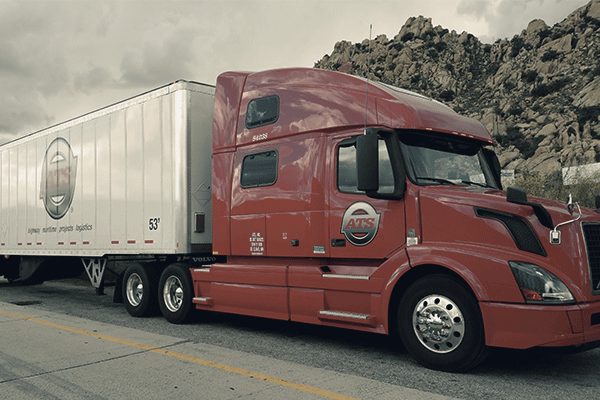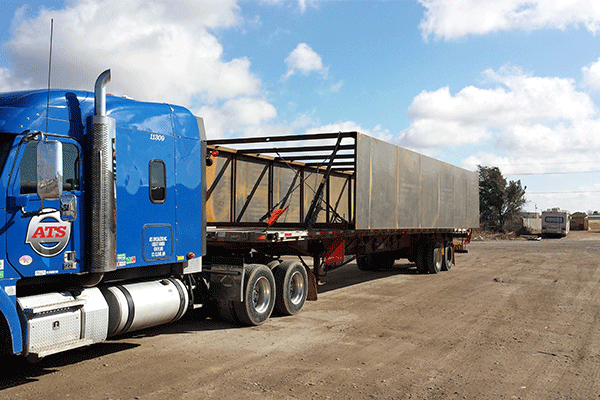
Sometimes, taking a step back is important. Doing so allows us to inventory our strengths and pinpoint other areas for improvement. The ability to do this, to take a step backward and survey your transportation network, is key to your success as a logistics professional.
Think of your network of partners as a garden. Gardens need upkeep. It’s not enough to simply bury seeds in the earth and walk away.
Nothing sprouts, flourishes or grows without diligent attention over time. Weeding, watering and trimming your garden, protecting your crop from the elements and patiently waiting for ripeness to set in, now that’s how you grow some veggies!
Creating a fruitful and dependable matrix of transportation companies is no different. Carriers must be vetted frequently for reliability and safety scores, adding quality providers should be prioritized, and the companies that aren’t up to snuff should be removed.
You know all of this. But that doesn’t make this process any easier.
Questions like “how many providers are enough?” and “how should I adjust the number of carriers on my contact list?” constantly rest at the top of your mind and today, you’re looking for answers.
Here at Anderson Trucking Service (ATS), we’ve interacted with all facets of the trucking industry over the past 65 years. This includes working with many shippers who also battle these questions.
To ease the struggle this nation’s logistics professionals experience when compiling their network, we’ve organized our thoughts into this article.
Read on as we explain what to consider when deciding how many carriers to have in your network and give you some tactics to employ for choosing.
The Fundamentals of a Transportation Network
There isn’t a catch-all answer to the query of “how many transportation providers should I have?” As such, answering this question — from a 30,000-foot view — is very difficult.
That said, certain network-size fundamentals apply to all companies.
These generalized pieces of advice should give you an excellent jumping-off point as you look to maximize the effectiveness of your own carrier system.
Here are four things that you should consider when making decisions about the size of your transportation community.
- Consider the 80/20 strategy
- Get a good mix of provider types
- Select providers based on your needs
- Limit the size of your carrier pool
Let’s talk a bit about each of these core tactics for managing your logistics.
1. Consider The 80/20 Strategy
In the transportation world, there are plenty of rules and regulations designed to keep everyone safe and supply chains running. Hours of service (HOS) regulations ensure that drivers are their freshest selves behind the wheel while the FSMA strives to keep consumable food safe during transportation.
The 80/20 strategy, however, is entirely different. This isn’t based on a governmental mandate or enforceable by law.
No, the 80/20 strategy is simply a recommendation, a widely-held best practice that helps shippers get the most from their transportation network and is broken down as follows:
Give 80 percent of your freight to 20 percent of your total carriers.
You see, the carrier-shipper relationships you hold should always be mutually beneficial. Carriers will value your partnership far more if you utilize them consistently rather than in one-off instances.
As such, to make the most of your carrier relationships, develop a list of core carriers.
These should be carriers that you use most often, carriers that understand your processes and your business intimately. That said, it’s important that you don’t make this list too large.
Ideally, these core carriers will comprise only 20 percent of the total transportation providers in your network. The final number of companies this ends up being will be based on how much capacity you need for 80 percent of your freight.
For the remaining 20 percent of your goods, pull from your larger pool of carriers. These should be trucking companies you trust but simply use less frequently.

Don’t give “untested” carriers — from this pool — more than this 20 percent of your freight. Doing so will make it more difficult to manage your transportation logistics.
Instead, gather a long(er) list of companies to turn to for momentary and last-minute capacity, while still leaning heavily on the tried and true companies you trust.
In a business where relationships matter — and developing them with your provider helps facilitate long-term success — secure reliable capacity with the 80/20 strategy.
2. Get a Good Mix of Provider Types
The transportation landscape is ripe with different types of providers, from various types of freight brokers to asset companies and 3pls. Each of these providers boasts separate skill sets and brings different things to the table.
When curating your transportation network, you’ll want to have a balanced mix of each type of provider.
Strong freight brokerages can find reliable capacity in all regions and work hard to build relationships with the best trucking companies available in each.
Asset providers, on the other hand, display their value by having a “guaranteed truck” for their customers, as they employ and dispatch their own drivers.
Freight brokers are excellent at providing timely solutions and effective spot prices while asset companies may be able to offer drop trailers more easily.
On top of this, having multiple brokers and asset carriers in your network will help to ensure that you’re given the best prices possible and help you identify outliers. If three out of your four brokers offer similar rates, while the last presents one far cheaper, there’s a high likelihood that rate number four isn’t enough to get the job done.
As such, having a good mix of providers will give your great insight into market trends and the cost of moving freight.
Whatever your capacity requirements may be, having a good mix of providers will go a long way toward ensuring your product meets its deadlines, even as your needs shift.
3. Select Providers Based On Your Needs
Your needs are dynamic, your timelines are important and your product is unique. During your transportation network collection process, you’ll want to select companies in a way that makes sense. In a way that’ll cover your bases.
As such, the number of companies you use to fill your network can increase or decrease depending on your needs.
If you’re a larger company with multiple products, find the best providers for each of them. Be it a carrier specializing in reefer freight or a competent heavy haul trucking outfit, the more your needs range, the more options you’ll want to have.
Don’t reign in the number of providers you frequent for the sole purpose of downsizing your list. If you have a set of needs, make sure you have enough good options to meet them.
Having an excellent transportation provider selection process is central to keeping a healthy network of providers. This process looks different for every business.
That said, remember to prioritize your needs, the core competencies that matter to the success of your business and go from there.
And, when looking for a freight brokerage, use this selection checklist to help you along.

4. Limit the Size of Your Carrier Pool
Finally, when it comes to the number of carriers in your network, having more isn’t always best. Many businesses run into issues with too many providers in the mix.
Trucking companies like to move freight and, when they’re not given enough opportunity to do so, they move on.
For instance, let’s say you transport 100 loads a month.
To move them you consistently utilize four providers for 80 shipments (20 each) and a handful of others for the last 20. This is a pretty well-balanced strategy as your four core carriers are benefiting from your business substantially.
They have some “skin in the game” which they appreciate. And, this appreciation leads to higher levels of service to create a mutually beneficial, long-term, business.
For the sake of argument though, let’s now pretend that instead of giving steady business to four carriers, you decide to utilize 20 different companies for your 100 loads (five each).
Giving a trucking company fewer shipments allows them less opportunity to build a fruitful relationship with your business. A relationship they value. As such, many of them will forgo your freight in exchange for greener pastures, and a larger piece of the pie, elsewhere.
For this reason, it’s important that you don’t utilize too many carriers for your freight. If you do, you’ll likely lose many valuable partnerships and see your tender rejection rates increase.
In a nutshell, you should only add as many carriers to your network as you’re capable of holding a relationship with. If you begin to feel overwhelmed with the number of options at your fingertips, you’ve got too many.
Managing your transportation supply chain shouldn’t feel like a burden or an impossible task, avoid this feeling by filling it with quality over quantity.

How to Choose a Transportation Provider
Now that you understand how the 80/20 rule is used, why it’s important to have a healthy mix of providers with different competencies and the damaging toll keeping too many carriers in your network can have, your next step is simple: choose.
But how can you possibly choose which providers to keep and which to throw out?
Don’t worry, we’ve got you covered in this regard as well. Check out these four tools developed to help shippers, like you, identify and select their best-fit transportation providers.
They’ve helped many companies make these decisions in the past and we bet they’ll assist you as well:
6 Key Factors For Choosing the Right Carrier
The Freight Brokerage Selection Checklist
The Freight Brokerage Common Mistakes Selection Guide
Freight Brokerage vs. Asset Carrier: What Logistics Provider is Best For You?
Educating yourself on what’s important to look for in a partnership and how to identify the wrong ones will go a long way toward helping your network thrive.
That said, if you’d like a bit more information on how ATS can add value to your transportation supply chain while helping you with some of this heavy lifting, contact us today. We take pride in helping shippers get their network working for them.




